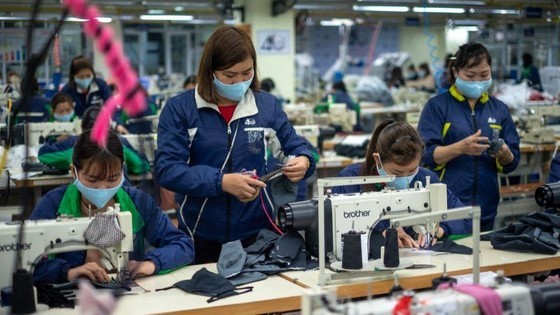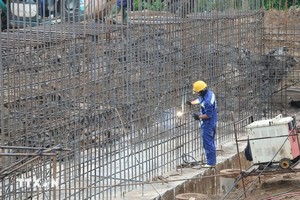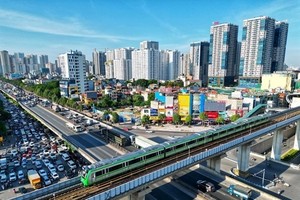 |
In a talk with Saigon Investment, Dr. Tran Du Lich, a member of the National Monetary and Financial Policy Advisory Council, shared these and other views on the state of the economy in 2023.
Journalist: - Sir, what do you think about Vietnam's 2022 GDP figure of 8.02 percent, when the data published in the fourth quarter of 2022 reflects a decrease, and what factors will affect the most in 2023?
Dr. Tran Du Lich: - In the two years 2020 and 2021, the economy was seriously affected by the implementation of very strict blockades and isolation measures to combat the Covid-19 pandemic, so the growth rate was also seriously reduced. In 2020, the GDP grew by only 3.98 percent and in 2021 it increased by 2.58 percent, the lowest level ever in decades. The decline in economic activities due to strict administrative control measures across the whole world affected markets, so when these measures were relaxed, economic activity recovered again very quickly.
Specifically, the economy in the first quarter of 2022 began to recover with a growth rate of 5.05 percent, in the second quarter it increased to 7.83 percent, and in the first six months of 2022, it reached 6.42 percent. With this momentum, the third quarter of 2022 saw an increase of 13.67 percent and the result in the nine months of 2022 saw GDP reach an increase of 8.83 percent.
However, from the fourth quarter of 2022, due to the very adverse impact of the world market and the declining domestic real estate market, the overall economic growth slowed down. As a result of this, GDP increased by only 5.92 percent, reducing the overall growth rate of the whole year to 8.02 percent. But looking at the economic growth dynamics, although 2022 saw impressive results, 2023 is still worrisome.
- Sir, the United Overseas Bank (UOB) forecasts that Vietnam's economic recovery is unlikely to be sustainable because the tightening of monetary policy in major central banks will affect external demand. Do you think that 2023 will be a very worrisome year? Please can you share some of your more specific thoughts on this?
- First of all, I agree with the judgment of international financial institutions about the world economic situation in 2023. These factors have had a negative impact on Vietnam's economy. In fact, from the beginning of the fourth quarter of 2022 until now, many industries such as leather and footwear, textiles, wood, and electronics, have decreased in activity, while many enterprises are producing in moderation, reducing labor, as well as reducing working hours in many industries. The construction industry remains stagnant due to shelved real estate projects and public investment implementation is slow. Besides, bottlenecks in acquiring capital have not improved significantly.
Currently, the economy is still facing two major difficulties, namely, industrial growth is decreasing gradually as many enterprises are reducing production and labor due to a lack of orders; and financial markets and real estate markets are still in a stagnant state. Perhaps this is the main reason why Vietnam only puts GDP growth in 2023 at 6.5 percent to 7 percent compared to 8.02 percent in 2022.
- Sir, what will be the main growth drivers in 2023?
- Talking about economic growth drivers in 2023, it is necessary to look back at GDP growth drivers in 2022 and their potential. In 2022, to increase GDP by 8.03 percent, the agricultural sector which includes agriculture, animal husbandry, fishery, and forestry, contributed 5.11 percent points, the construction sector contributed 38.24 percent points, and the service sector contributed 56.65 percent points.
First of all, although the agricultural sector contributed the lowest in the value-added structure of the economy, it still played a strong role in the economy and in maintaining stability, which was a bright spot in the economic structure.
The construction sector still faces difficulties in the immediate future but has prospects of recovery in the mid-2022 to mid-2023 period, when the world market improves as many have forecast especially with the rapid implementation of infrastructure investment projects, and public investment projects. The service sector is the main driving force, in which the domestic market is still more promising, and the tourism and transportation industries are expected to maintain growth momentum.
Therefore, I think that although there will be difficulties in the first six months of 2023, if the bottlenecks in investment are cleared, and the socio-economic recovery and development program is effectively implemented in accordance with Resolution No. 43/2022/QH15 of the National Assembly and Resolution 11/NQ-CP of the Government, the goal of increasing GDP by about 6.5 percent in 2023 is still feasible.
- Sir, what do you think about the monetary policy management in 2022 and what changes do you recommend for 2023?
- In my opinion, the monetary policy in 2022 achieved two main goals, namely, controlling inflation and stabilizing the Vietnam dong and exchange rate, and also stabilizing credit institutions and supporting the GDP growth target. Thanks to the achievement of these two goals, flexible and prudent monetary policy management have become one of the important pillars to withstand the impact of fluctuations in the world financial market.
However, in the fourth quarter of 2022 after the debacle of corporate bonds, many commercial banks raced to raise deposit interest rates, tighten real estate credit, and increase lending interest rates, so the capital market is still facing difficulties.
In 2023, I think the key issues to focus on are restoring confidence in financial markets; providing targeted credit necessary for economic activities, including for the real estate market; lowering deposit and lending interest rates under the Government's economic recovery program; coordinating more synchronously between fiscal policy and monetary policy; and removing bottlenecks to absorb capital in order to increase resilience in the economy, especially for enterprises directly affected by world economic fluctuations.
- Thank you very much.
























